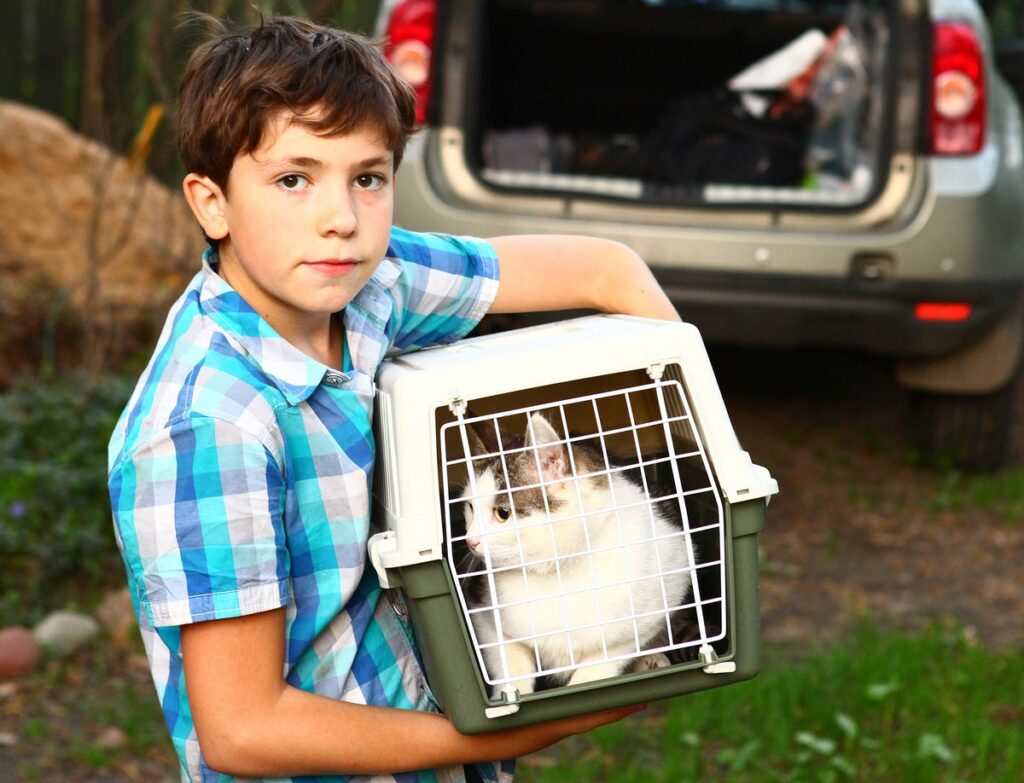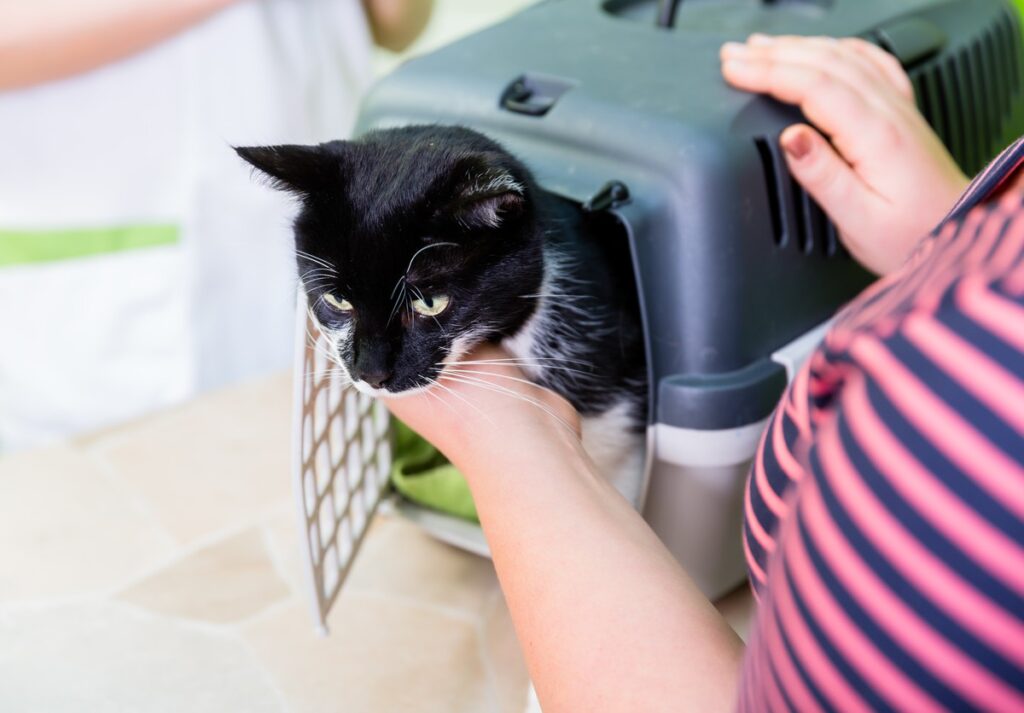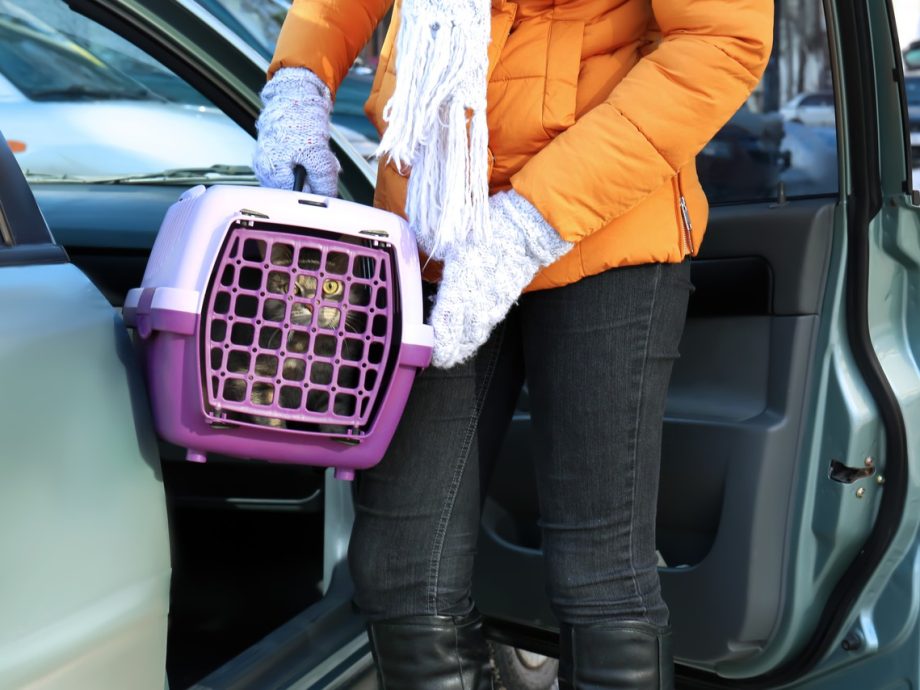For many owners, transporting the cat to the veterinary clinic can be the most challenging part along with getting the cat into the carrier in the first place.

Here are some tips to make the process as easy as possible:
- See our information on choosing and using a cat carrier here. To make the process as easy as possible and reduce the stress for your cat it is really important to choose a good carrier and to have it out in the home with your cat using it daily.
- If the carrier is out in the home and used all the time, you may be able to simply encourage the cat to get in the carrier by putting a few treats in it and letting the cat get in by itself.
- Make sure there is bedding in the carrier that your cat has been using so they recognise the smell.
- If your cat will not get in the carrier voluntarily, stay calm and simply pick the cat up and gently place it in the carrier through the opening at the top.
- In addition to making sure the carrier is used daily by the cat in the home environment (for example to sleep in and/or to eat in), it is helpful to use the carrier to transport the cat on a regular basis. These should be short trips (using a car if that is how you would normally get to the vet) but taking the cat straight back home. By doing this on a regular basis the cat will get used to using the carrier out of the home and will not always associate it with a trip to the vet.
- When holding the cat in the carrier, remember to support the carrier well and avoid swinging it or bumping into objects. Keeping the carrier level and steady will help increase the sense of security of the cat.
- If the carrier is used in a car, make sure it is secured well and cannot move around. Securing the carrier in the footwell may be the best option, but it can also be secured on a seat using a seatbelt so long as it will not move.
- A blanket placed over the carrier (leaving the front visible so you can see in and the cat can see out) may also help increase the sense of security.
- Drive gently and not too fast! Avoiding sudden turns or braking will help to minimise stress for the cat.
- Talk to your cat calmly and give reassurance – your cat knows and will recognise your voice.
- If you are going to your veterinary clinic, when you arrive it is usually best to leave the cat in the carrier in the car. Go into the clinic and let them know you are there. Depending on the clinic set-up and waiting area, if there is not a separate space for cats where they can wait comfortably, it may be best to wait with your cat in the car until the vet is ready to see you.








